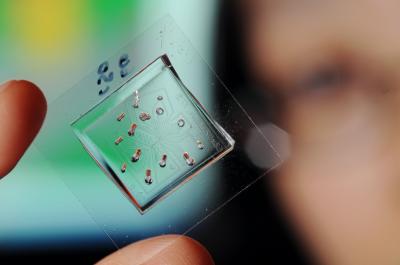By Kalwinder KaurAug 21 2012
Multi-cellular animals like fruit flies, nematodes, or zebra fish serve as major tools for carrying out research on genetic factors involved in disease process, response to new drugs etc.
 Georgia Tech associate professor Hang Lu holds a microfluidic chip that is part of a system that uses artificial intelligence and cutting-edge image processing
Georgia Tech associate professor Hang Lu holds a microfluidic chip that is part of a system that uses artificial intelligence and cutting-edge image processing
Microscopic visual examination of individual animals enables detection of mutants, promoting further study.
Researchers have demonstrated an automated system, which utilizes advanced image processing and artificial intelligence supports reliable examination of several individual nematode species called Caenorhabditis elegans. The system effectively substitutes convoluted manual examination steps and detects slight variation from worm-to-worm, finding out genetic mutations.
A technique involving rapid, autonomous examination of thousands of worms can revolutionize the method of C. elegans-based high throughput genetic screening.
The research was published in the advance online publication of the journal Nature Methods.
Hang Lu, the project's lead researcher and his team, are studying genes that impact the occurrence of synapses in the worms. A model featuring synapses of specific neurons and labeled by a fluorescent protein supports the research that focuses on subjecting mutations to genomes of large number of worms followed by analyzing the changes in the synapses. The resulting mutant worms will foster further investigation on genes related to alterations in the synapses.
Changes in developmental patterns resulting from genetic mutations can be understood from the differences between the mutants and the normal or "wild type" worms.
As thousands of possible genes support these developmental processes, the researchers need to analyze worms in large number. Lu and her team previously developed a microfluidic "worm sorter" for rapid examination of worms under a microscope.
Lu's system includes a camera for capturing 3-D images of each worm while its passage via the sorter. Using the system, each image set can be compared with the predicted "wild type" worms. Worms having slight variation from normal ones can be identified, promoting further study. The new system that boasts autonomous processing enables more rapid and efficient examination and analysis.
Disclaimer: The views expressed here are those of the author expressed in their private capacity and do not necessarily represent the views of AZoM.com Limited T/A AZoNetwork the owner and operator of this website. This disclaimer forms part of the Terms and conditions of use of this website.